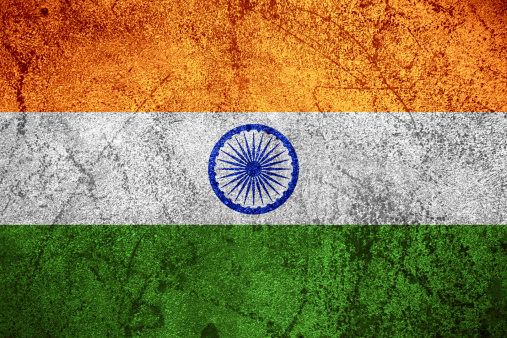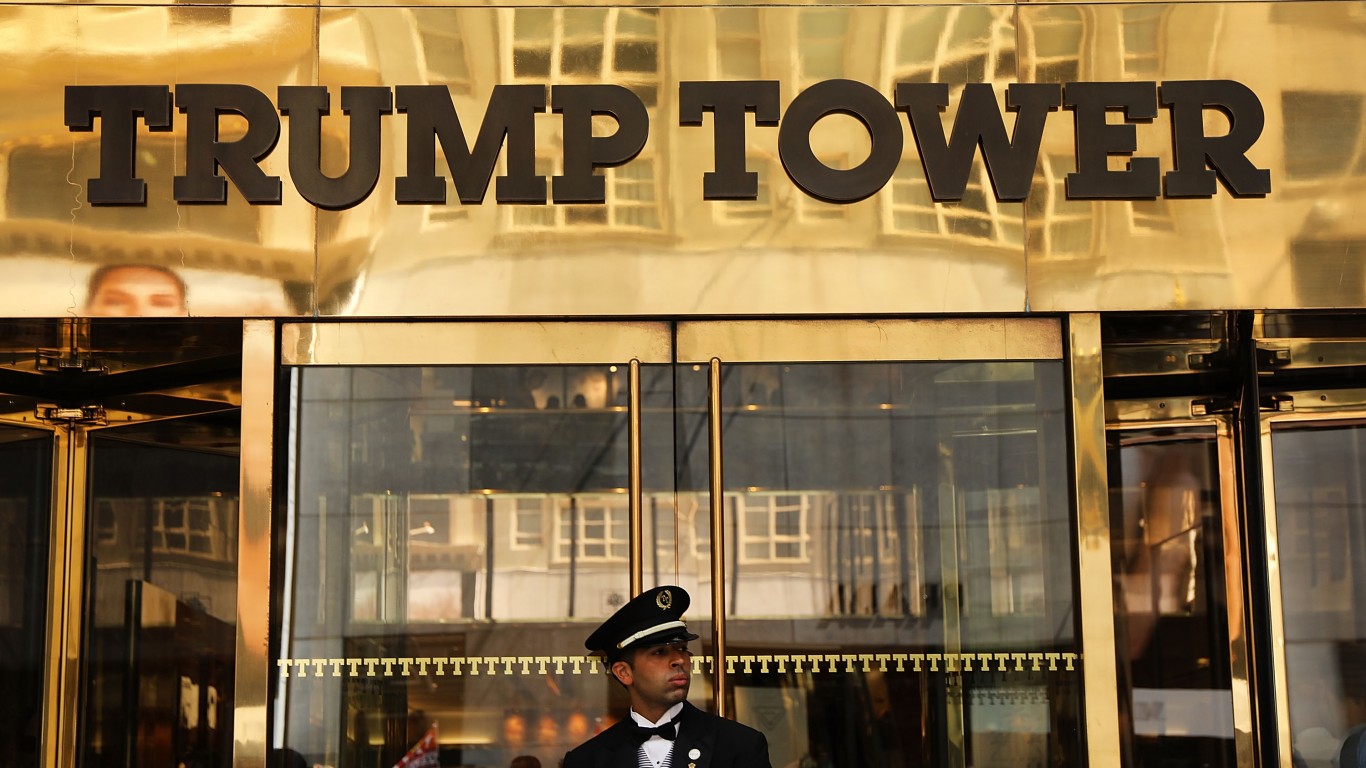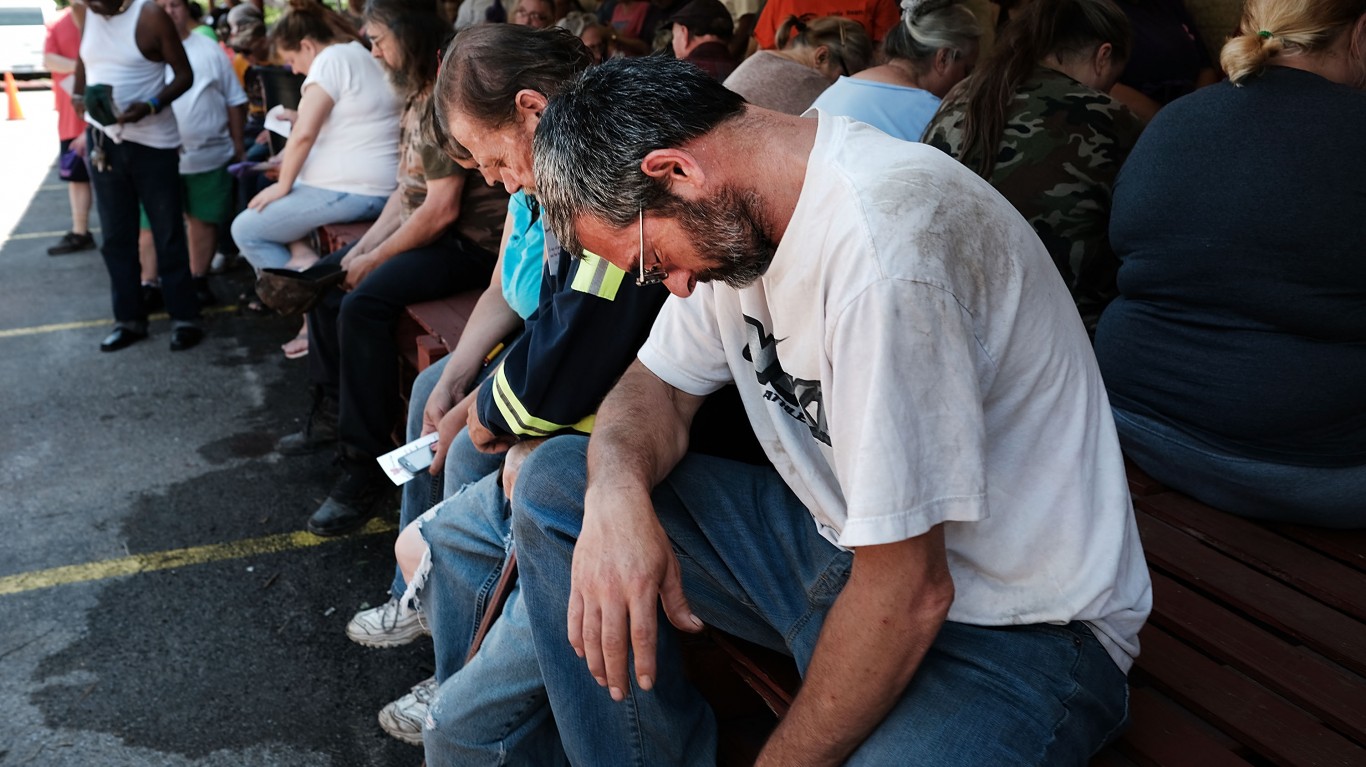While inflation has been relatively tame in the United States and Europe, several large nations have struggled with rising prices. Sadly, most instances are simply stagflation, where prices are rising but the economic growth is substandard. A high inflation rate jeopardizes a country’s economic stability and the well-being of its people. 24/7 Wall St. reviewed the nations with the highest inflation rates around the world and it was in many cases shocking to see which nations were on the list.
As was the case in the United States, even a modest increase in health care costs of a few percentage points had major repercussions for the population as lower-income residents stopped affording many services. In developing and emerging economies, rising prices can cause much more severe problems as most of the benefits of economic growth are being absorbed by a higher cost of living. Unlike much of the developed world, many nations do not have formal health care systems. And with prices of other necessities increasing as well — from food to heating to gasoline to clothing — there is less to spend on everything.
Higher inflation can be crippling for economic development. A 10% increase in income compared to the prior year when prices are stable allows for a higher disposable income and higher savings rates. However, if prices rise 10% while economic growth slows down to 2%, then real purchasing power has eroded.
If the countries that suffer from high inflation rates and slower economic growth also have high unemployment rates, low economic mobility and low job openings, the situation can quickly deteriorate. That is when the risk of stagflation becomes real. Three of the high-growth, emerging market BRIC nations — Brazil, Russia, India and China — are among the nations suffering from high inflation.
In several of the high inflation nations, the reported unemployment rate remains quite high. Four nations had a higher unemployment rate than the U.S.’s 7.4% as of July. In South Africa, more than 25% of the workforce was unemployed as of the second quarter of 2013. Egypt, currently embroiled in a massive political crisis, has an unemployment rate of more than 13%.
Many of these nations also have trade deficits, meaning they are massive net importers. Just four of these nations — Argentina, Brazil, Russia and Vietnam — have had exports exceed imports over the most recently available 12 months. India’s trade deficit was the second highest in the world behind only the United States, at nearly $200 billion for the 12 months through the second quarter of 2012.
Countries with high inflation also face high government borrowing costs as a result, since lenders need to be compensated for the loss of their investments’ buying power. Each of the seven nations for which 10-year government bond interest rates were available had one of the eight highest interest rates in the world. To borrow for 10 years, Pakistan’s government must pay a quoted rate of 12%.
Based on the 57 nations considered by the Economist, 24/7 Wall St. identified the nations with the highest inflation rates measured by year-over-year increases in consumer prices. We reviewed figures on output, unemployment, trade, budgets and interest rates, also from the Economist. Population data are from the CIA’s World Factbook. We excluded Hong Kong from the rankings because it is a Special Administrative Region of China and not a fully independent nation. Similarly, while Zimbabwe and Iran are both struggling with high inflation, they were not considered by the Economist, likely due to the countries’ unreliable economic data.
These are the countries with the highest inflation rates.
11. Brazil
> Inflation rate: 6.3%
> GDP growth rate: 1.9%
> Unemployment rate: 5.6%
> Population: 201 million
Brazil is a BRIC nation and the largest economy in South America. Unfortunately, its economy has not grown as fast as the international investment community and its local population may have hoped. Residents have become more vocal about the low quality of public services and corruption, even as the standard of living has improved. Inflation rose from 5.2% a year before to 6.3% in July, and gross domestic product grew less than 2% in the first quarter — much less than the nation’s growth potential. Brazil is hosting the 2016 Summer Olympics, but by the time the games kick off, the international investment community may pay little attention. Brazil’s central bank is now intervening to ease its currency volatility, the Brazilian real, with the promise of buying dollars at a future date. International investment inflows are continuously slowing after the real’s previous appreciation made the nation uncompetitive in global exports. Brazil’s real GDP growth rate of 7.5% in 2010 was among the world’s best, but since then the country’s average growth rate has been closer to 2%.
10. South Africa
> Inflation rate: 6.3%
> GDP growth rate: 2.0%
> Unemployment rate: 25.6%
> Population: 49 million
South Africa is a resource-rich nation that has suffered from continued inflation and labor problems. The country has one of the worst unemployment rates of any major economy in the world, at 25.6%. Gold miners and other workers have been striking for higher pay. Last year, a mining strike resulted in the deaths of dozens of workers at the hands of police. The reality is that as long as there is demand for gold, the nation will have great opportunities ahead. As an example, South Africa’s stock exchange is the 15th largest in the world, according to the CIA World Factbook. The nation’s budget deficit may hamper the central bank’s ability to fight inflation and unemployment while maintaining its growth ambitions.
9. Russia
> Inflation rate: 6.5%
> GDP growth rate: 1.2%
> Unemployment rate: 5.3%
> Population: 143 million
President Vladimir Putin is back in charge of Russia, and the nation is hoping to keep building on its image as an up and coming global economic power player. Russia, one of the BRIC nations, is hosting the upcoming Winter Olympics and owns vast natural resources. However, both foreign investors and Russians have had to deal with a difficult business climate, which is the result of overregulation, corruption, rampant organized crime and competition within oligarch-dominated sectors. Russia’s inflation rate is up from 5.6% a year ago to 6.5% as of June. While the official unemployment rate is low at 5.3%, the latest GDP growth rate of a mere 1.2% mixed with higher prices could mean Russia is at risk of stagflation.
8. Vietnam
> Inflation rate: 7.5%%
> GDP growth rate: 5.0%
> Unemployment rate: 3.6%
> Population: 92 million
Vietnam has been in transformation for more than 25 years now, moving from a nation of central planning to finally joining the World Trade Organization in 2007. It has great opportunities ahead and a very young population. Production of exports has become such a strength for the Vietnamese economy that even Chinese firms are beginning to outsource work there. Exporting goods is the driving force in the nation’s economy — Vietnam has a current account surplus equal to 5% of its GDP — and industrial output is growing while exporting food is on the decline. The CIA World Factbook points out that some 40% of Vietnam’s GDP comes from state-owned enterprises. Loosening government control may bring about foreign investment opportunities. Central bank policies in Vietnam have focused largely on economic stabilization, rather than on growth targets. This brings up the question of how an inflation rate of 5% a year ago is now running at 7.5%, especially when economic growth of 5% as of 2012 is the slowest growth in more than a decade.
7. Pakistan
> Inflation rate: 8.3%
> GDP growth rate: 6.1%
> Unemployment rate: 6.0%
> Population: 193 million
Pakistan’s greatest fiscal problem may simply be that it is still so closely tied to India, a nation with which it has a strained relationship. The nation’s weak government and the fact that so much of the nation effectively lives outside of that government’s control only complicates matters. Pakistan’s reputation and status as a business destination have been damaged by concerns about terrorism and political instability, internally and externally, and its porous borders likely have contributed to its problems. Food prices have been the major source of inflation in the country, yet textiles are the key export opportunity. The inflation rate is high at 8.3%, but down more than a percentage point from a year ago. In roughly the same time, the GDP growth rate has been just over 6%.
6. Indonesia
> Inflation rate: 8.6%
> GDP growth rate: 5.8%
> Unemployment rate: 5.9%
> Population: 251 million
Indonesia’s woes are very similar to those of India, with its rupiah weakening and its inflationary pressures even worse compared to a year ago. Indonesia actually weathered out the global financial crisis incredibly well. Fitch and Moody’s even raised Indonesia’s credit rating to investment grade in recent years as a result. But this summer there was news of riots after the government mandated fuel price hikes. Inflation already was rising before the summer’s development. Indonesia has decided to tighten its monetary policy as a tool to fight inflation. If growth is being crimped while inflation is rising, Indonesia’s status as “one of the next BRIC nations” may be in jeopardy. A new head for the country’s investment board may help the nation’s business prospects. The nation also has to build better infrastructure to foster growth while somehow keeping a lid on its consumer prices.
5. Turkey
> Inflation rate: 8.9%
> GDP growth rate: 3.0%
> Unemployment rate: 8.8%
> Population: 81 million
Turkey’s big news this summer was its civilian uprising. Turkey actually has experienced serious growth, even as most of the eurozone has suffered from economic contraction. Turkey’s unemployment rate is high at 8.8%, and its 8.9% inflation rate is paired with the latest pre-protest real GDP growth of only 3% — much lower than the country’s real GDP growth rate of close to 9% as recently as 2011. Turkey’s public sector debt to GDP ratio has fallen to about 36% in 2012, which may offer its central bank some extra wiggle room ahead. Turkey’s hopes of joining the European Union may have been damaged even further by international criticism of recent Turkish crackdowns on protests.
4. India
> Inflation rate: 9.6%
> GDP growth rate: 4.8%
> Unemployment rate: 9.9%
> Population: 1.22 billion
India is truly the biggest inflation worry of the world because of its large population. A recent all-time low in the rupee only makes the situation more worrisome. India’s equity market has performed as badly as its currency, and international investors have pulled out of India. India’s new central banking head said in the past decade that too much quantitative easing could create unforeseen problems. The nation’s growth rate has been running well under historical norms at a time when its inflation rate has been too high. Meanwhile, the national infrastructure cannot support the current population, let alone a growing one. India even has tried to restrict the purchase of gold to keep its currency from devaluing, and its dependence on foreign oil means that at least some of its inflation risk is out of its hands. Currently, India’s projected current account deficit is one of the world’s largest, at 4.5% of 2013 GDP. For international investors, India may present an even greater opportunity than China. Unfortunately, that opportunity is on hold.
3. Egypt
> Inflation rate: 10.3%
> GDP growth rate: 2.2%
> Unemployment rate: 13.3%
> Population: 85 million
Egypt is a nation where things have gone from bad to worse, and it may only be the tip of the iceberg. While the Arab Spring has rocked many countries, in Egypt there already have been two regime changes, the recent one a military coup. The ongoing civil unrest and violence had many businesses withdrawing personnel. Tourism has all but vanished, and the country’s ability to import much of its needed goods has been met with lower and lower purchasing power of the Egyptian pound. Egypt’s growth rate was barely 2% as of the first quarter of this year, and that was before the latest round of national violence and bloodshed that dominated the news over the summer. The inflation rate was more than 10%, while the unemployment rate was well into double-digits. Egypt will have to take some serious measures to stabilize its leadership, and then its economy, before the outside world is interested again.
2. Argentina
> Inflation rate: 21.1% (unofficial estimate)
> GDP growth rate: 3.0%
> Unemployment rate: 7.2%
> Population: 43 million
It may be that Argentina’s economy has become too difficult to measure accurately. The government has released dubious official figures, and currency controls are making matters even more questionable. Argentina risks some of the same inflationary woes of the 1980s, and it appears as though official consumer price calculations may not be made public until late in 2013. The government claimed consumer prices rose 0.9% month-over-month in July, while outside sources estimate the inflation rate at more than 2%. Unofficial estimates of the yearly inflation rate cited by the Economist are more than 20%. Nationalizing (stealing) the foreign-owned oil outfit YPF does not exactly help encourage businesses interested in investing in the nation, particularly considering the high local taxes. Import restrictions and currency control restrictions are not helping matters either. Its national statistics put GDP growth rate at 3.0% year-over-year in the first quarter, and the unemployment rate was listed as 7.2% for the second quarter.
1. Venezuela
> Inflation rate: 42.6%
> GDP growth rate: 2.6%
> Unemployment rate: 6.9%
> Population: 28 million
Venezuela is supposed to be living in a post-Chavez economy, yet things are no better than when he was alive. There have been national shortages of toilet paper and other key personal hygiene products. There is even a black market for its paper money, called the bolivar, which likely makes the government’s official numbers even worse than they appear. Venezuela’s oil business is perhaps the only reason the nation remains relevant to the rest of the global economy — some 95% of exports being tied to oil demand. Years and years of saber-rattling against the United States have driven many Westerners’ business ambitions deeper into the ground as well. The inflation rate was already incredibly high in 2012 at close to 20%, but in one year the inflation rate has doubled. Venezuelan leaders should consider bringing in experts to create serious fiscal reform, or the nation will have to prepare for even worse times ahead.
Take Charge of Your Retirement: Find the Right Financial Advisor For You in Minutes (Sponsor)
Retirement planning doesn’t have to feel overwhelming. The key is finding professional guidance—and we’ve made it easier than ever for you to connect with the right financial advisor for your unique needs.
Here’s how it works:
1️ Answer a Few Simple Questions
Tell us a bit about your goals and preferences—it only takes a few minutes!
2️ Get Your Top Advisor Matches
This tool matches you with qualified advisors who specialize in helping people like you achieve financial success.
3️ Choose Your Best Fit
Review their profiles, schedule an introductory meeting, and select the advisor who feels right for you.
Why wait? Start building the retirement you’ve always dreamed of. Click here to get started today!
Thank you for reading! Have some feedback for us?
Contact the 24/7 Wall St. editorial team.




